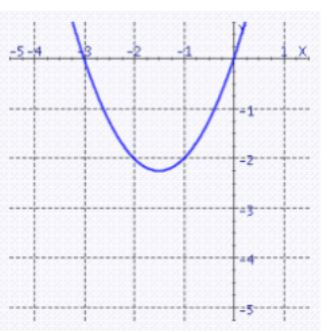Show that the function has exactly one zero in the given interval.f(x) = x3 +  + 1, (-?, 0).
+ 1, (-?, 0).
What will be an ideal response?
The function f(x) is continuous on the open interval (-?, 0). Also, f(x) approaches -? as x approaches -?, and f(x) approaches ? as x approaches 0 from the left. Since f(x) is continuous and changes sign along the interval, it must have at least one root on the interval.
The first derivative of f(x) is f'(x) = 3x2 -  , which is everywhere positive on (-?, 0). Thus, f(x) has a single root on (-?, 0).
, which is everywhere positive on (-?, 0). Thus, f(x) has a single root on (-?, 0).
You might also like to view...
Graph the quadratic function.
a. 
b. 
c. 
d. 
Use the amortization table to find the monthly payment for the loan.AMORTIZATION (PRINCIPAL AND INTEREST PER THOUSAND DOLLARS) What is the monthly payment on a 30-year loan of $53,500 if the annual interest rate is 8%?
What is the monthly payment on a 30-year loan of $53,500 if the annual interest rate is 8%?
A. $373.97 B. $411.42 C. $413.02 D. $392.69
Use the given vectors to find the indicated expression.v = -2i - 5j - 4k, w = 3i - 4j + 2kFind v × (5w).
A. -66i + 8j + 55k B. -90i - 56j + 83k C. 130i + 10j - 115k D. -130i - 40j + 115k
Solve the problem. Assume that the minimum payment on a credit card is the greater of $27 or 3% of the unpaid balance.Find the minimum payment on an unpaid balance of $769.52.
A. $230.86 B. $27.00 C. $23.09 D. $28.09